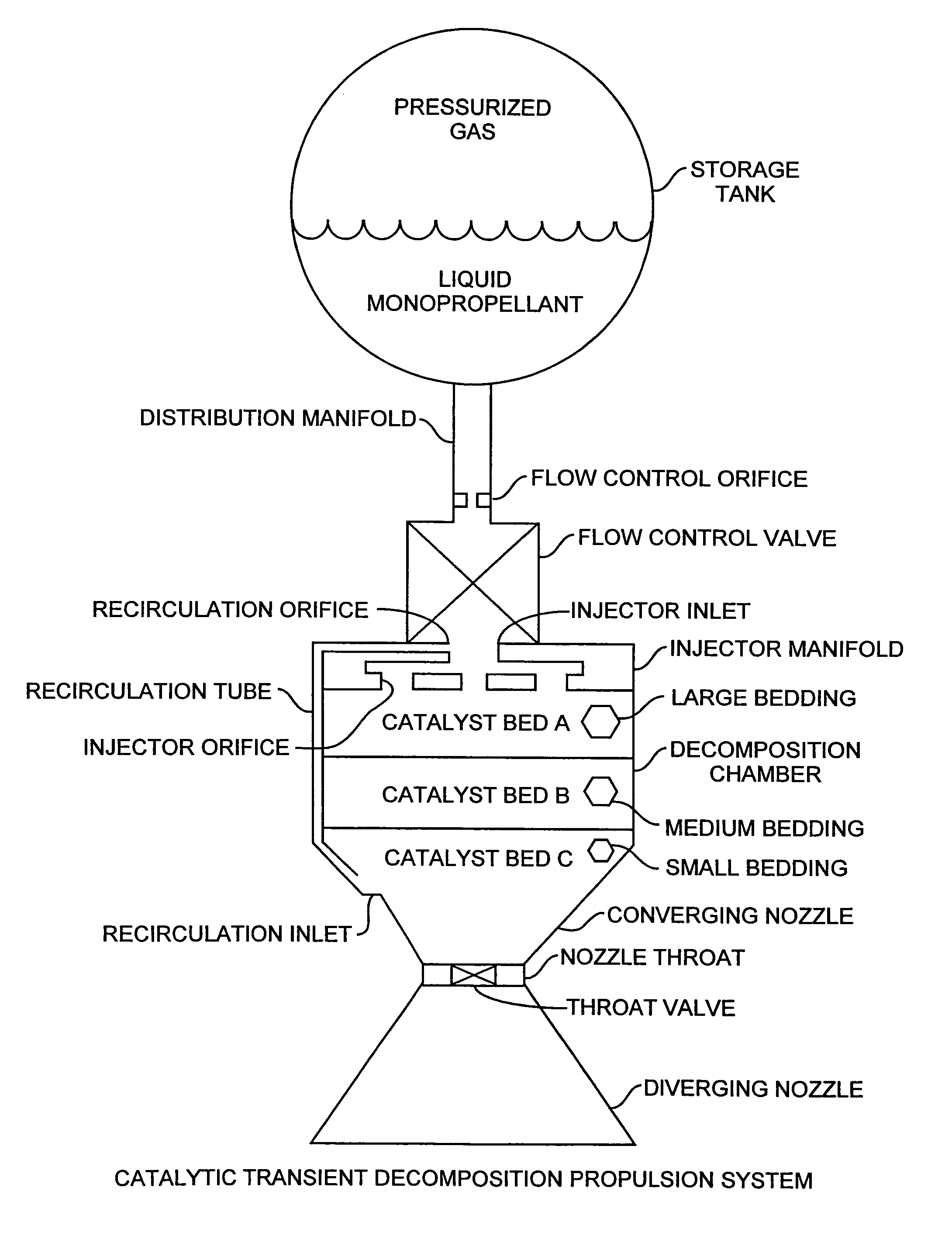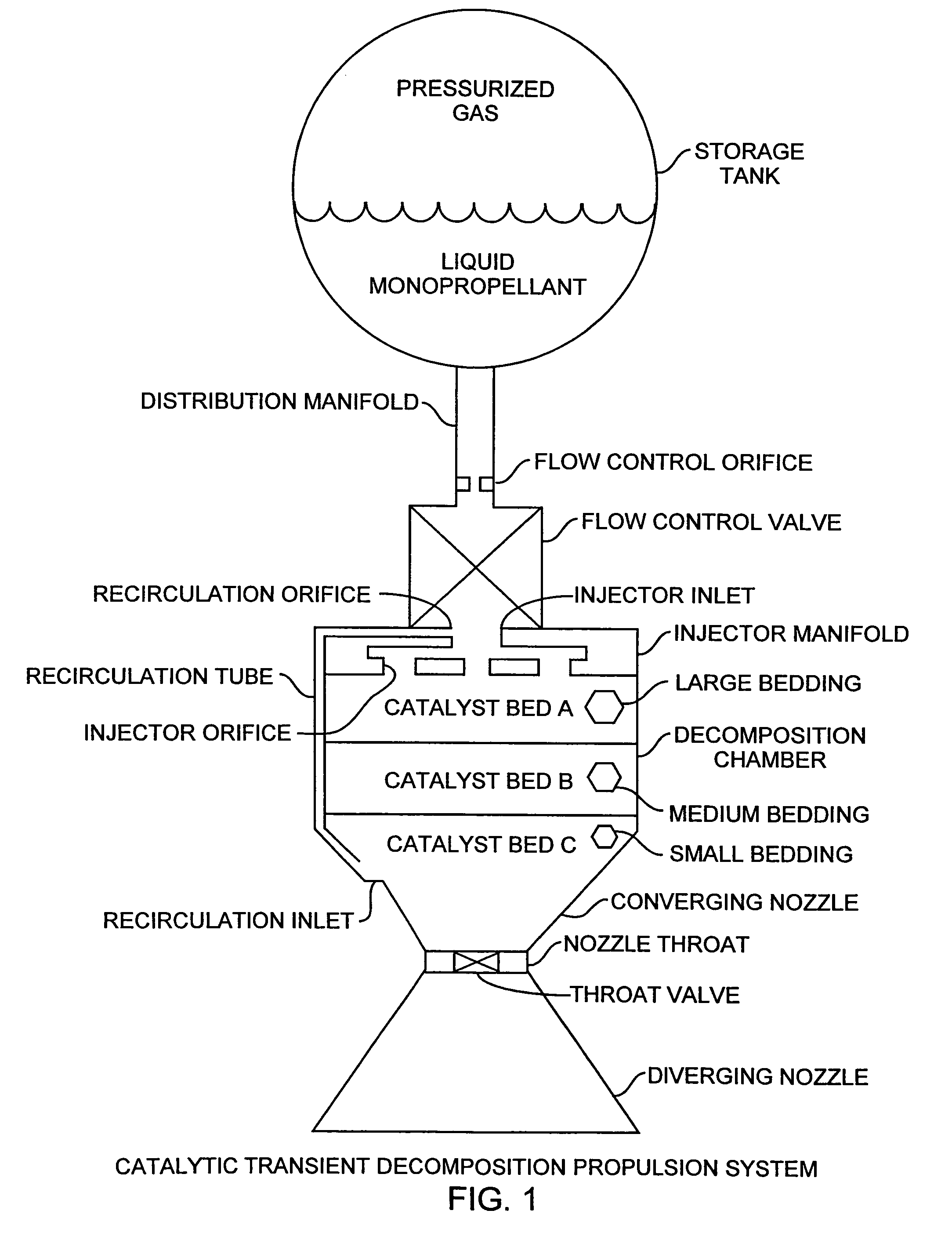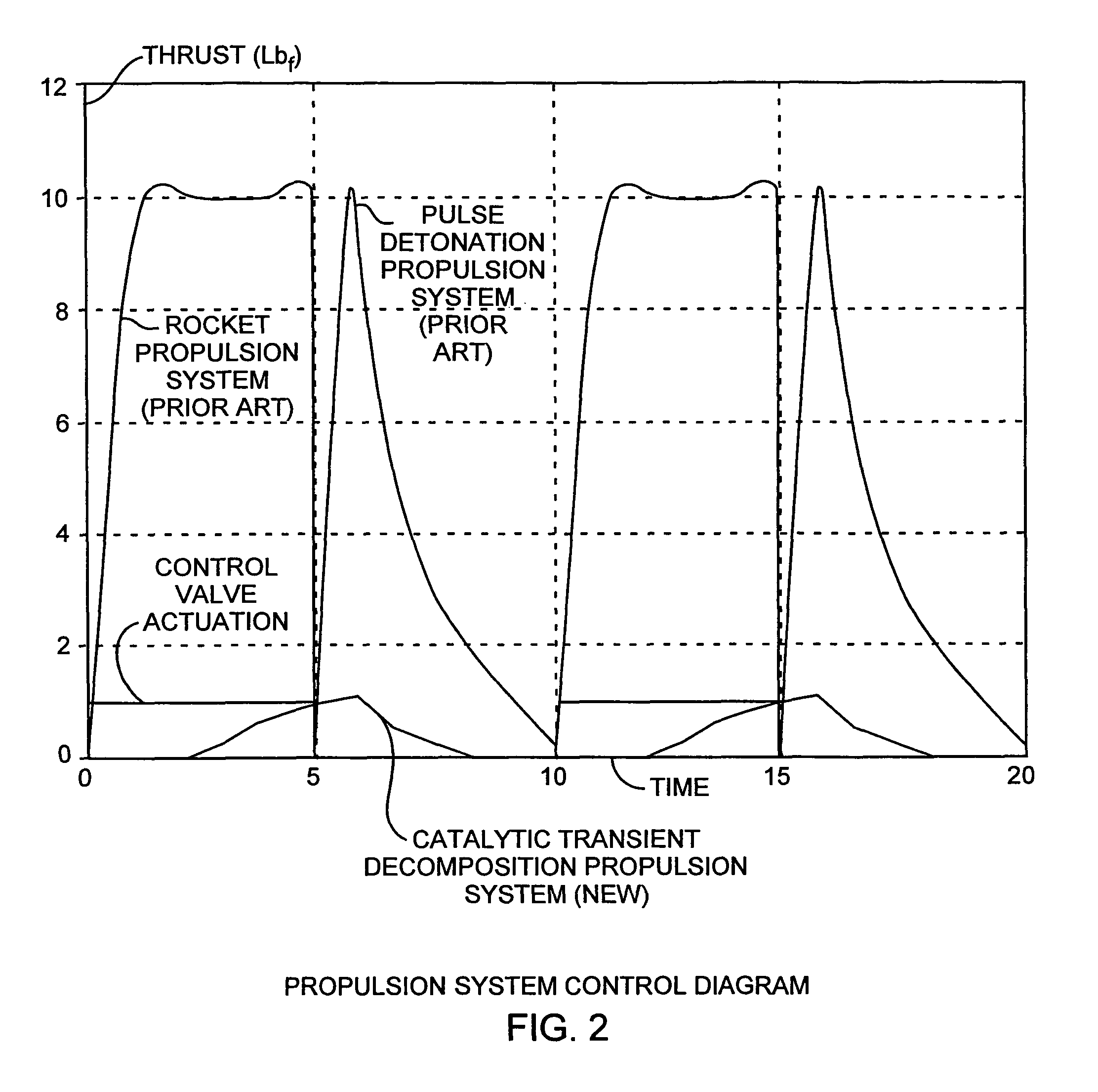Catalytically activated transient decomposition propulsion system
a propulsion system and catalytic activation technology, applied in the field of propulsion systems, can solve the problems of reducing performance, reducing performance, and reducing performance, so as to improve performance and control, improve performance, and improve performan
- Summary
- Abstract
- Description
- Claims
- Application Information
AI Technical Summary
Benefits of technology
Problems solved by technology
Method used
Image
Examples
Embodiment Construction
[0019]An embodiment of the invention is described with reference to the figures using reference designations as shown in the figures. Referring to FIG. 1, a catalytic transient decomposition propulsion system includes a storage tank, pressurized gas and monopropellant that flows from the tank into a distribution manifold having a flow control orifice that restricts the flow to a maximum flow rate. The storage tank is a monopropellant holding tank that is pressurized by a compressing gas as the pressurized gas. The tank can be a low weight tank because a low pressure is sufficient to provide a low velocity liquid monopropellant injection. The pressurized gas can be nitrogen-compressed gas. The propellant is transported under pressure from the storage tank, through the distribution manifold and flow control orifice and through a flow control valve that controls the flow of the monopropellant through an injector inlet and into an injector manifold. The propellant flow control valve ope...
PUM
 Login to View More
Login to View More Abstract
Description
Claims
Application Information
 Login to View More
Login to View More - R&D
- Intellectual Property
- Life Sciences
- Materials
- Tech Scout
- Unparalleled Data Quality
- Higher Quality Content
- 60% Fewer Hallucinations
Browse by: Latest US Patents, China's latest patents, Technical Efficacy Thesaurus, Application Domain, Technology Topic, Popular Technical Reports.
© 2025 PatSnap. All rights reserved.Legal|Privacy policy|Modern Slavery Act Transparency Statement|Sitemap|About US| Contact US: help@patsnap.com



